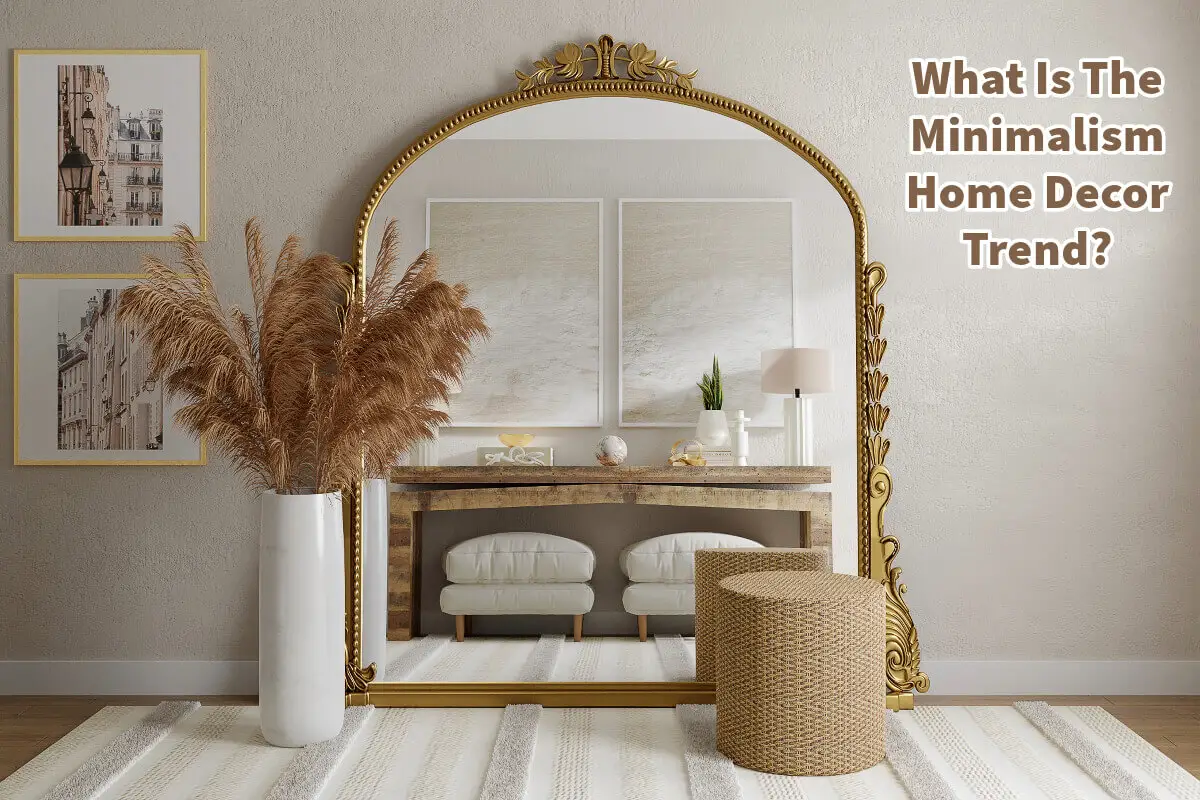Minimalism has become a modern lifestyle buzzword with its own media gurus who promise that decluttering our homes and simplifying our lives will help us cope with an overwhelming world.
The Minimalist design trend is more than just a fad—it’s an influential visual style spanning multiple domains like architecture, interiors, art, graphics, and fashion. But what are the core tenets of minimalist design, especially in home decor? What makes a home genuinely minimalist? Read on as we learn minimalism’s history and look into the key characteristics that define this enduring style and its continued relevance today.
Table of Contents
- Brief History Of Minimalist Design
- Key Characteristics Of Minimalism Design
- Minimalism – Less Is More
- Minimalism – Focus On Functionality
- Minimalism – Clean, Simple Lines
- Minimalism And Sculptural Forms
- Lack Of Superfluous Ornamentation And Decoration
- Monochromatic, Limited Color Palette
- Use Of Limited, Well-Chosen Materials
- Everything Has A Place And A Purpose With Minimalism
- Use Of Space And Natural Light
- Spotlight On Craftsmanship
- Interior Design That Is Airy And Uncluttered
- Related Content
Brief History Of Minimalist Design
Before we examine the critical features of minimalist home decor, it’s worth taking a moment to understand its origins. Emerging in the 20th century as a reaction against ornate and overly decorative styles, minimalism found inspiration in various movements and cultures.
The simplified forms of the Dutch De Stijl movement, the serenity of traditional Japanese gardens, the clean aesthetics of Scandinavian design, and the philosophies of modern and Bauhaus architecture all contributed to the minimalist style.
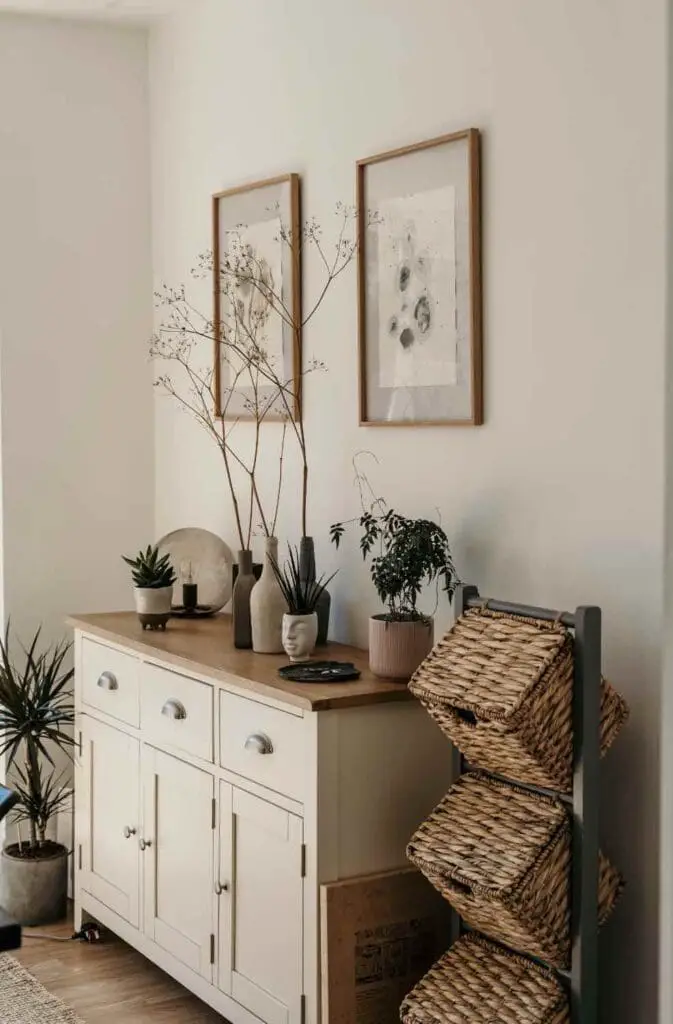
With legendary figures like Mies Van Der Rohe and Dieter Rams leading the way, minimalist design has evolved to influence everything from buildings and furniture to gadgets and clothes.
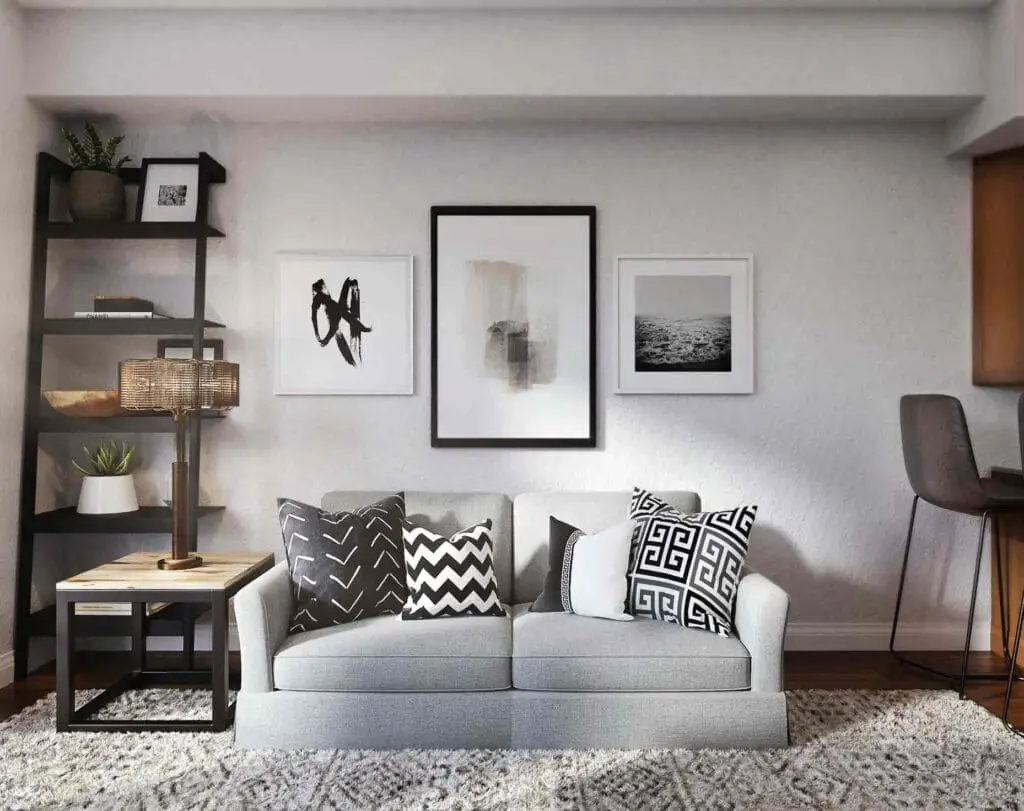
The Minimalist design trend is a trend that continues to be an essential design trend. It is a trend that many people like, especially if they want a home or space that does not look cluttered but looks clean and neat.
Key Characteristics Of Minimalism Design
The minimalist trend has some key characteristics that make it the trend that continues to be popular. Read on as we list some of the critical characteristics of this minimalist home decor trend.
Minimalism – Less Is More
The phrase “Less is More,” coined by Mies Van Der Rohe, encapsulates the essence of minimalist design. Minimalism aims to achieve a lot with little, focusing on essential elements while discarding the unnecessary. This principle allows for a balanced and harmonious living space, cutting through the noise and clutter of modern life.
Minimalism – Focus On Functionality
Minimalism is not just about removing items; it’s about making room for more meaningful engagements. Every piece of furniture and every object must have a reason for its existence.
By doing so, minimalism brings the spotlight onto the functionality of design, ensuring that form always follows function.
Minimalism – Clean, Simple Lines
Using clean lines and simple forms in minimalist design contributes to the overall sense of calm and order. There are no elaborate details or decorations—just the basics, executed perfectly.
This focus on simplicity often gives minimalist designs a timeless quality, as they don’t subscribe to transient trends.
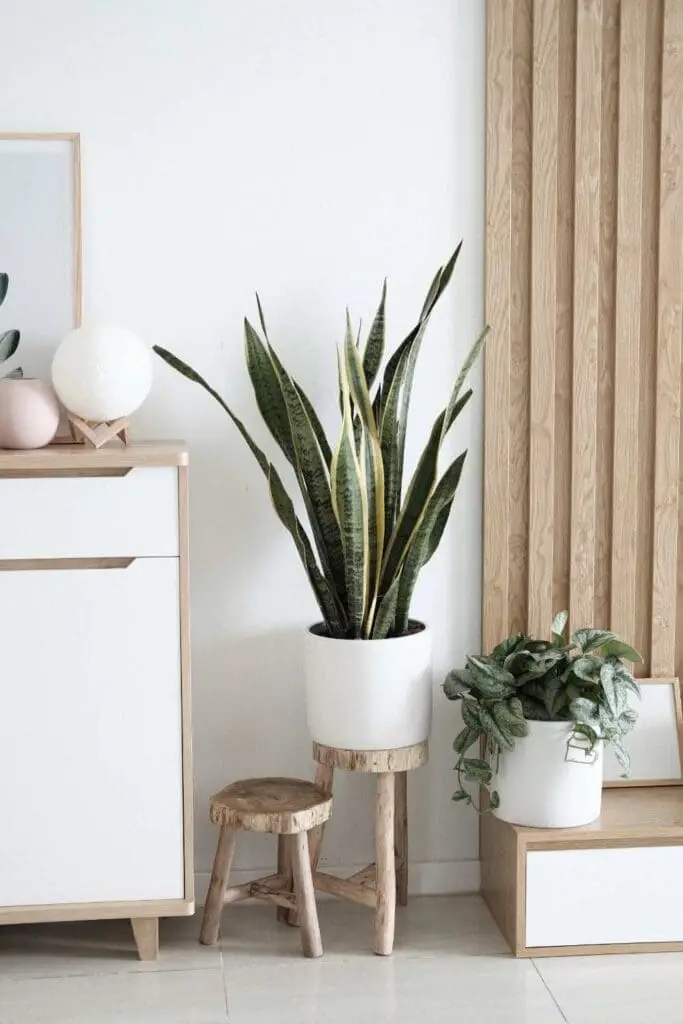
Minimalism And Sculptural Forms
Minimalist design often utilizes sculptural forms to add a sense of movement and dynamism to a space. These forms aren’t merely aesthetic; they are functional pieces that offer a fresh perspective on ordinary objects, turning them into wrt.
Sculptural forms to Larson are elaborate, but should still be simple to go with minimal this trend.
Lack Of Superfluous Ornamentation And Decoration
Decorations in a minimalist setting are not random or excessive but are reduced to the minimum required for functionality and primary aesthetic appeal. Anything that doesn’t serve a purpose is considered excessive and is removed, which helps to create a more tranquil environment.
This trend is all about having as little as possible in your design space and, at the same time, having the displays serve a purpose function and look good.
Monochromatic, Limited Color Palette
Minimalist design typically involves a monochromatic or limited color palette. Neutral shades like whites, grays, and blacks are popular choices. Sometimes, color is used sparingly as an accent to add visual interest, contributing to a soothing and cohesive look.
Generally speaking, colors should be minimal, muted, and neutral colors.
Use Of Limited, Well-Chosen Materials
Concrete, steel, glass, and wood are commonly used materials in minimalist design. Their essential nature lends itself well to various applications, providing both function and aesthetic pleasure.
These materials are often left in their raw, unadorned state, celebrating their intrinsic beauty.
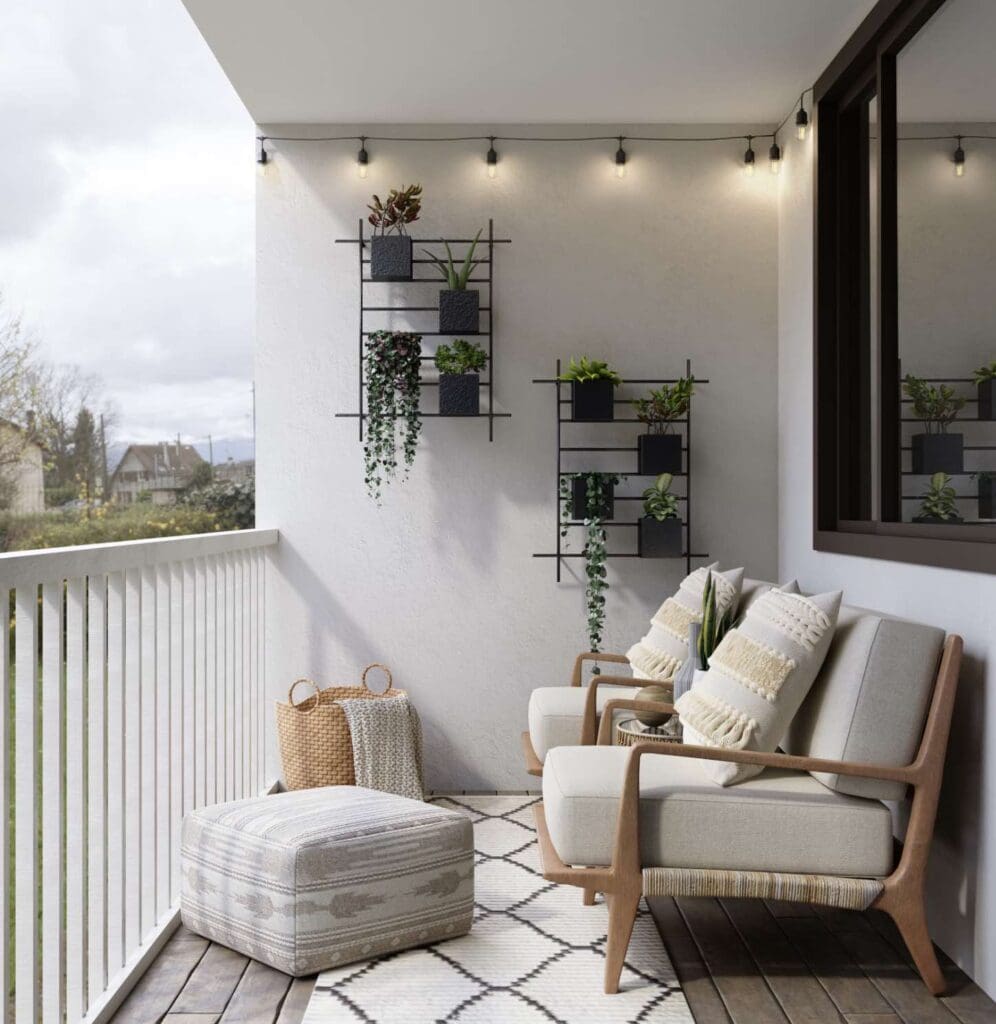
Everything Has A Place And A Purpose With Minimalism
In minimalist design, you won’t find items without a home. Well-thought-out storage solutions are integral to keeping spaces uncluttered. Every item has a designated place and purpose, which helps maintain order and tranquility.
This trend is about keeping the things you buy and purchase to the minimum. In other words, it’s not about clutter, it’s not about junk, it’s about everything having a purpose and its place.
Use Of Space And Natural Light
Minimalism makes excellent use of space and natural light. Open floor plans and large windows help create an airy atmosphere. Light serves not just a functional purpose but also becomes a design element in itself, changing the feel of the space throughout the day.
Spotlight On Craftsmanship
In minimalist design, the focus often shifts to the craftsmanship. With fewer elements in a room, the quality of those elements becomes crucial. Every seam, joint, and finish is executed flawlessly, turning even the most essential items into something extraordinary.
For the minimalist trend, the things you buy and purchase are high-quality; they show their craftsmanship or are handmade.
Interior Design That Is Airy And Uncluttered
Lastly, minimalist interiors are characterized by open layouts and integrated storage solutions, which help to keep the space airy and uncluttered. The focus is on creating a sanctuary free from the chaos of everyday life.
Clutter is not part of the minimalist trend. Clutter and junk are the opposite of minimalist tread.
Minimalist design is more than a trendy buzzword—it’s a thoughtful approach to life and art.
Its simplicity, functionality, and elegance make it aesthetically pleasing and deeply resonant with our desire for serenity and focus in an increasingly complex world. Whether you are a dedicated minimalist or just someone curious about the design philosophy, there’s no denying its lasting impact and continued relevance in our lives today.
If you want to manufacture home decor products in Asia, we would love to discuss how Mondoro can help you. We can produce for you a variety of home decor products.
Find out more about how Mondoro can help you create, develop, and manufacture excellent home decor and furniture products – don’t hesitate to contact me, Anita. Check out my email by clicking here or become a part of our community and join our newsletter by clicking here.
Mondoro gives out a FREE Lookbook to anyone interested. You can receive a copy of our latest Lookbook by clicking here.
Listen to our Podcast called Global Trade Gal. You can find it on all major podcast platforms. Try out listening to one of our podcasts by clicking here.
Subscribe to our Mondoro Company Limited YouTube Channel with great videos and information by clicking here.
Related Content
What Is Alabaster? Alabaster For Home Decor Product Development
Production is about manufacturing goods from raw materials to finished products. Productivity is considered part of the production process. Productivity is about how efficient a country or company is. Productivity is an economic principle; a formula is used to calculate productivity.
You can discover more by reading What Is Alabaster? Alabaster For Home Decor Product Development by clicking here.
Natural Agate Stone Beads For Home Decor Products
Agate is a natural rock formation used as a decorative element for centuries. It can be found in many parts of the world, and there are many different kinds and colors of agate stone. In the Asia practice of Feng Shui, it can help us strike a balance in life and for good luck.
By clicking here, you can discover more by reading Natural Agate Stone Beads For Home Decor Products.
What Is The Difference Between Rattan, Wicker, And Cane Furniture?
Rattan is a type of palm or vine that grows in the jungles of Southeast Asia. Rattan refers to a kind of natural material. Wicker is a type of weave using rattan materials. Cane also refers to a type of weave that is usually woven using rattan material.
You can learn more by reading our blog What Is The Difference Between Rattan, Wicker, And Cane Furniture? by clicking here.

